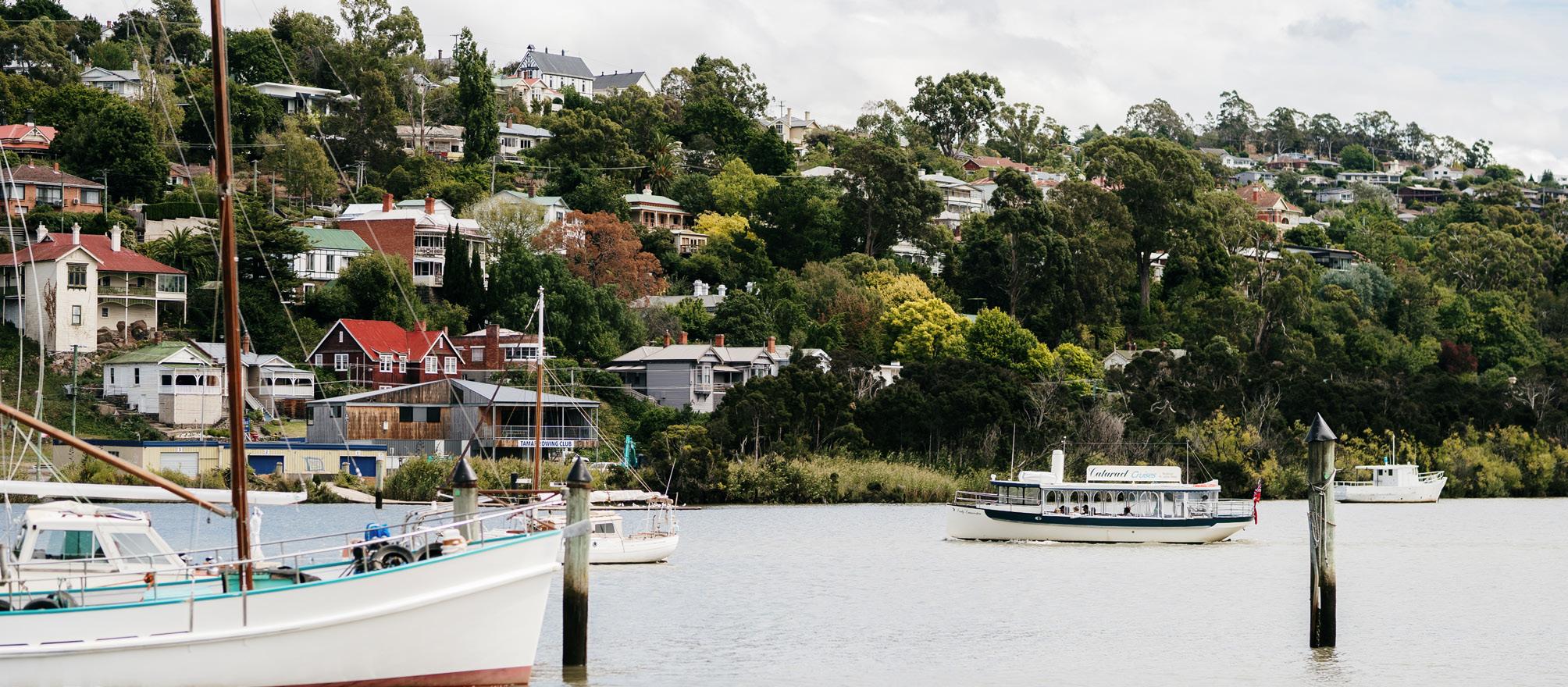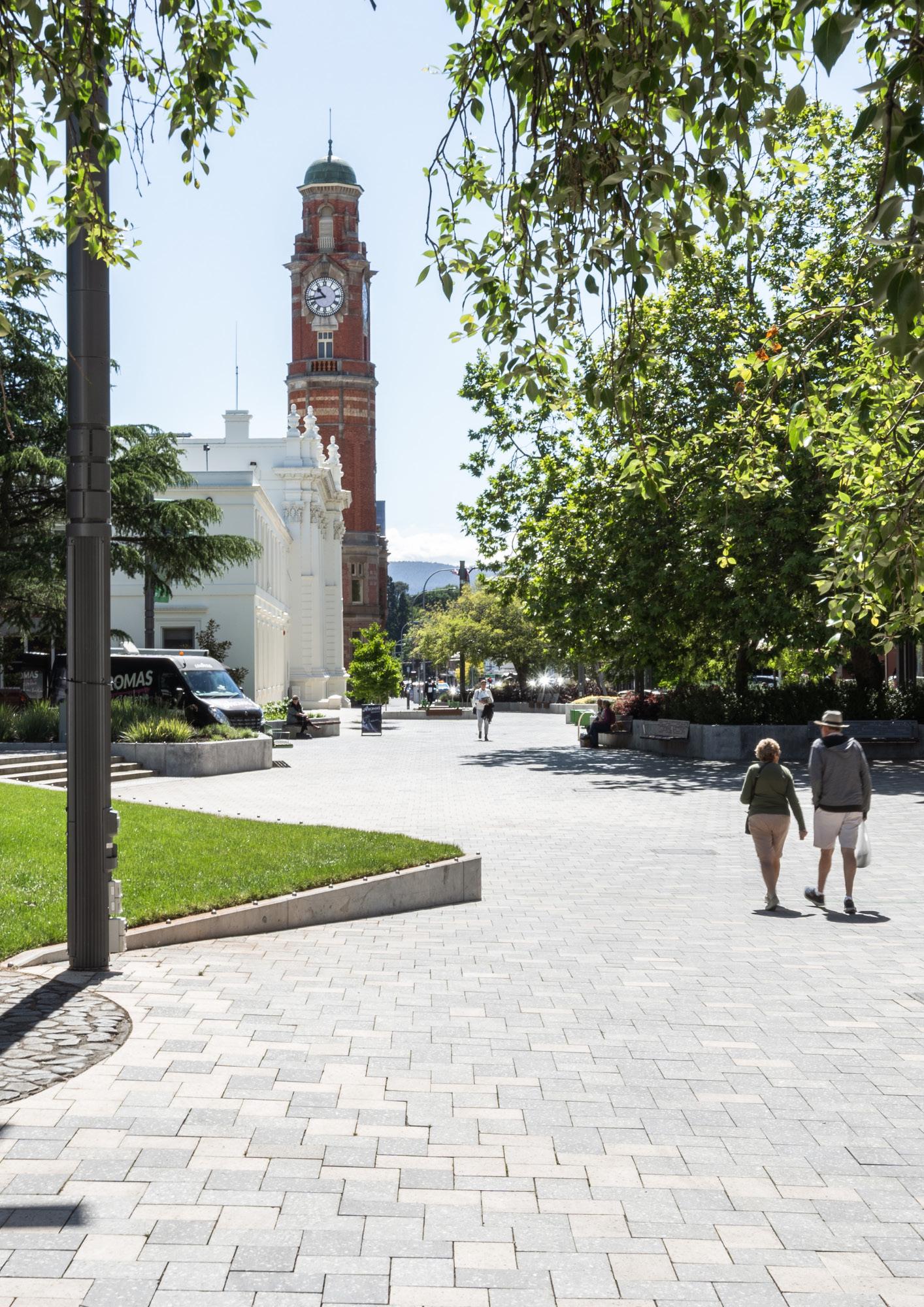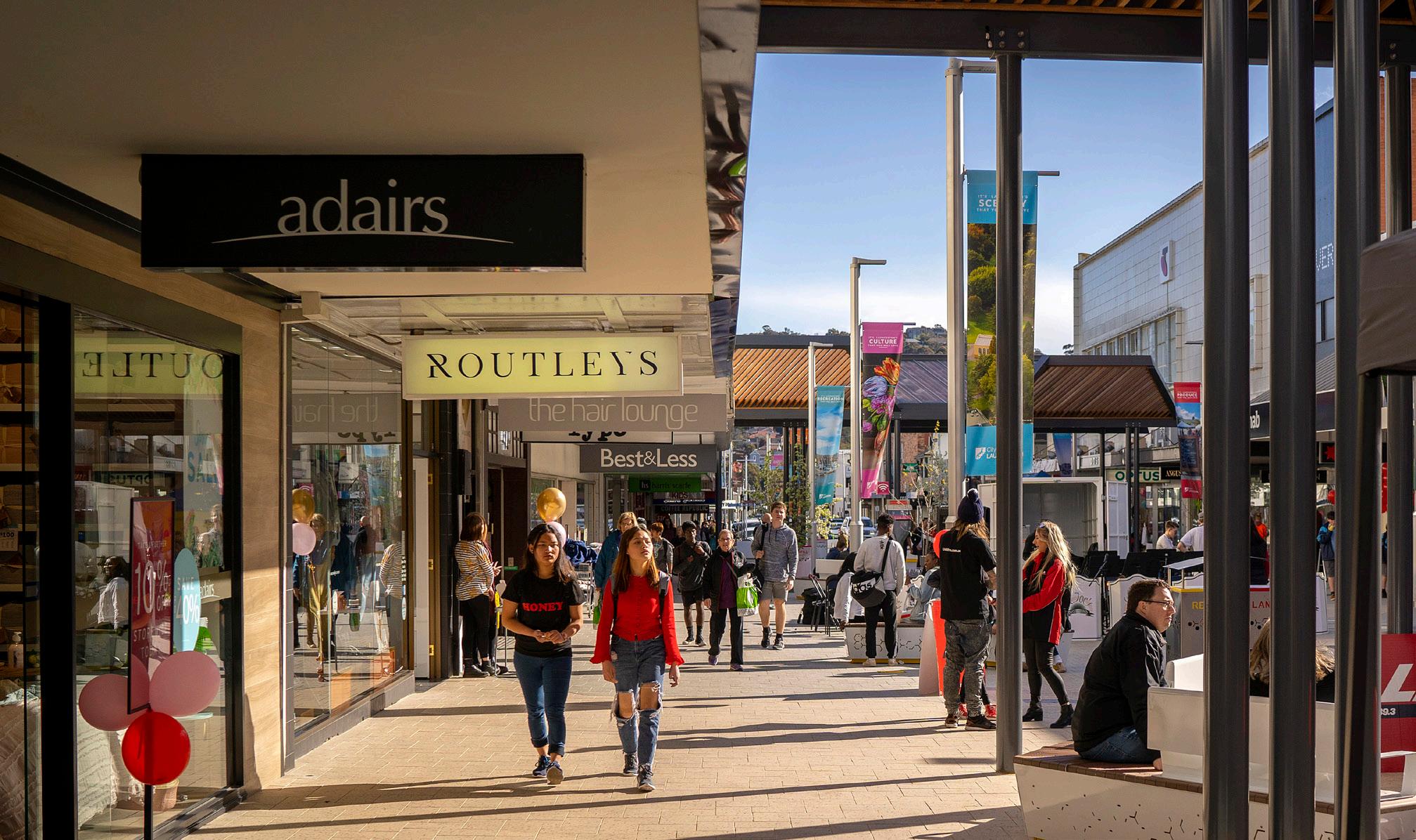
4 minute read
City of Launceston Context Strategic Alignment
The City of Launceston’s normal operational activities together with proactive community initiatives contribute significantly to quality local economic outcomes. The Council is a significant part of the local economy, employing between 500-600 Full Time Equivalent staff (only 9 businesses in the City of Launceston employ over 200 staff) and spending over $50M on services to the community every year. The City of Launceston is also a significant manager of community assets which are worth close to $2B including road networks, UTAS Stadium, QVMAG and over 148 recreational areas.
Many community owned assets contribute greatly to the liveability of Launceston including high quality recreational green space such as Riverbend Park, City Park and Royal Park, tree-lined streets and pedestrian pathways, and Cataract Gorge. The built form of the city’s heritage buildings, its arts and cultural services and facilities such as Queen Victoria Museum and Art Gallery also contribute to the appeal of Launceston. Furthermore, community services and facilities such as the City’s libraries and aged care services, leisure and entertainment facilities including University of Tasmania Stadium and Launceston Aquatic.
Other enablers Council is not directly responsible for, but which it can influence to varying degrees through collaborative partnerships with other tiers of government or institutions, include regional transport and communications infrastructure, health services, education infrastructure, research and innovation infrastructure and a supportive regional planning framework.
The City of Launceston Economic Development Strategy seeks to formalise many years of sustained economic development work by Council that includes amongst other things:
• Funding and collaborating with marketing organisations to promote Launceston as a place to visit
• Advocating for investments in liveability projects such as improved transport infrastructure and community services.
• Facilitating investment, including strategic land use planning and planning permit approvals.
• Managing community assets that deliver long term benefits.
• Delivering a range of business information, networking events and development sessions.
• Supporting a range of employment programs.
• Being a local leader in emerging trends such as the circular economy and smart city technology.
• Assisting in and delivering growth enabling projects.
Economic Development Strategy Purpose and Planning Framework
The City of Launceston Economic Development Strategy 2022 - 2026 provides the framework and direction to facilitate and promote Launceston’s economic development over the next five years. The strategy’s focus is on the mutually-reinforcing and complementary relationship between improvements in economic activity, community wellbeing, cultural diversity, a sense of place and the environment.
This strategy is aligned with Council’s Corporate Planning Framework and has been prepared in the context of the City’s broader program of work and strategic objectives.
It also aligns with wider regional goals as articulated in the Greater Launceston Plan.
The below image illustrates the planning framework in which the City of Launceston Economic Development Strategy operates. Importantly, this Strategy articulates a vision for the economic development of the City and Council’s economic development functions, operations, strategies and required resources to help realise the vision.
It is important to note that the private sector drives economic development and government alone cannot achieve the economic development vision. Some economic development roles are collaboratively owned whilst others are specifically owned.
Northern Tasmania Region
The Northern Tasmania Regional Economic Development Strategy 2019 (REDS) outlined a vision (as endorsed by the City of Launceston) for the greater region to achieve the following targets by 2026:
REDS Targets
• Increase Gross Regional Product by 50%
• Create 8,000 new jobs
• Increase in average weekly wage by $100 per week
It is widely acknowledged that the prosperity of both the City and Northern Tasmania Region are correlated and interdependent. The City of Launceston recognises that Launceston accounts for approximately 60% of the economic activity in Northern Tasmania. This highlights the importance of Launceston taking a significant leadership position in the greater region.
Since the inception of REDS in 2019, Northern Tasmania has made significant progress towards the targets set.
Despite COVID-19 the region has:
• Increased GRP from $8,859m to $9,354m in 2021 (an increase of 5.59%)
• Added 2,579 new jobs from 65,888 in 2019 to 68,468 in 2021 (32% of target)
Weekly income increases will be tracked through the upcoming Census data release.
Tasmania
As the second largest City in Tasmania, Launceston plays a significant role in the State economy producing $4.75 billion in Gross Regional Product or 14.4% of the state’s Gross State Product (economy. id).
In order to maximise the benefits of our actions, the City of Launceston will align our economic development agenda with the broader state priorities where appropriate.
This includes working with our key government partners including the Department of State Growth and the Office of the Coordinator General as well as aligning with key Tasmanian Government strategies and reports including:
• Premier’s Economic and Social Recovery Advisory Council (PESRAC) Report
• Tasmanian Visitor Economy Strategy T-21
Commonwealth
The Launceston City Deal signed in 2017, is a tenyear plan to make Launceston one of Australia’s most liveable and innovative regional cities, with growing incomes and falling levels of disadvantage.
The Commonwealth Government, Tasmanian Government and the City of Launceston are working together to deliver integrated investment and practical actions that build on Launceston’s strengths and tackle key challenges.
To date, the City Deal has seen over $536 million invested in the City, underpinned by the $260 million relocation and redevelopment of University of Tasmania’s main Launceston campus to the inner city at Inveresk.


The City of Launceston recognises the importance of the City Deal as a key driver of our economic development agenda. We are committed to ensuring the genuine partnerships forged across all levels of government, the private sector and the community are built on to achieve the vision.
A Whole-of-Council Approach
This strategy is a Council-wide document. The actions that Council undertakes in economic development require the participation of different Council departments, working in a collaborative, whole-of-organisation framework.
While a ‘whole-of-Council’ approach to supporting and promoting Launceston’s economic development is essential, there are a number of ‘core’ economic development activities which are ‘owned’ and resourced by a dedicated Economic Development team.
Collaboration for Sustainable Outcomes
This strategy articulates and promotes a partnership approach between Council and other stakeholders in government, the non-government sector and industry. Key partnerships exist with the Australian and Tasmanian Governments within the City Deal, the Office of the Coordinator General, Northern Tasmania Development Corporation, CityProm, Launceston Chamber of Commerce, University of Tasmania, Regional Development Australia [Tasmania], Visit Northern Tasmania and other northern Tasmanian councils.
It also includes other important contributors to economic development including but not limited to The University of Tasmania, TasTAFE, Launceston Airport, Bell Bay Advanced Manufacturing Zone, the Australian Maritime College and Australian Department of Defence as well as Tasmania’s broader private sector.
Through co-ordinated and collaborative strategic effort, and guided by the actions presented in this Strategy, Council and these other ‘agents of change’ are well-placed to influence the City’s appeal as a place to visit, invest, work, study and live.










